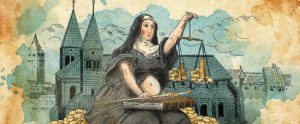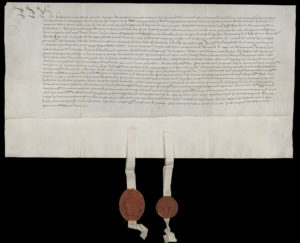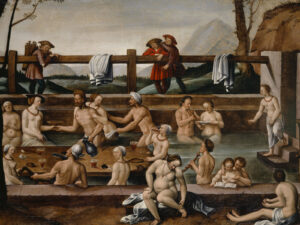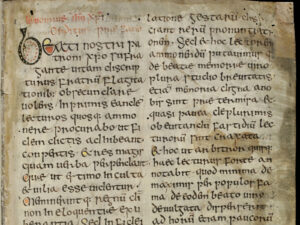
Illustration: Marco Heer
Nuns – Powerful women in the Middle Ages
Medieval nuns – the phrase brings to mind a group of women living in seclusion behind convent walls, devoting themselves to their faith. But a look at history gives a very different picture.
Convents have a long history. Women created the first self-contained religious communities as long ago as the fifth century. Along with religious beliefs, the reasons why they chose this path were many and varied: spirituality, an escape from a forced marriage, a wish to receive an education, or in some cases exclusion from their families for political or economic reasons. But if you’re picturing a group of women leading a life of seclusion behind high convent walls, you’re mistaken. Nuns were deeply involved in secular matters, and often had great political power as well. A prime example is Elisabeth von Wetzikon.
In the abbess of the Fraumünster abbey in Zurich, ecclesiastical and secular power were unified in a single person. Elisabeth von Wetzikon (1235-1298) was one of the most influential figures of 13th century Zurich. As Fürstäbtissin, she held sway not just over the abbey, but over the entire city. In her role as ‘Imperial Abbess’, she was the region’s most senior judge, elected the mayor, and had the right to have coins minted or to impose tariffs. This woman had a hand firmly on the tiller in every major decision and transaction.

Document confirming the handing over of the Fraumünster abbey to the City of Zurich, 8 December 1524.
Zurich City Archives
FROM ABBESS TO WIFE AND MOTHER
Two centuries later, times had changed. The Reformation divided society, and Zurich’s Fraumünster abbey was caught in the middle. By then the community was led by Katharina von Zimmern, who was elected in 1496 and remained in office for 28 years. To avoid a physical conflict she relinquished the abbey to the city in 1524, a step that also had significant implications for her private life. Katharina von Zimmern received a very generous compensation payment, and a year later married mercenary leader Eberhard von Reischach, with whom she had two children. It’s unusual enough for a former abbess to marry a soldier and become a mother. But if she had already given birth to a daughter during her term as abbess, that would create a scandal in this day and age. Yet that’s exactly the case with Katharina von Zimmern. Recently, historians have unearthed sources confirming this. However, it’s not known who the father of this illegitimate daughter was.
These two examples show that nuns in the Middle Ages were far more than just celibate, ascetic women who only cared about the world inside their convent walls. Their lives were full of interest, politically involved and very diverse.



